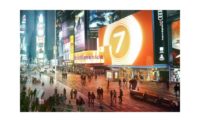ENR New York's 2010 Owner of the Year: New York City Department of Environmental Protection














...onsiderable amount of work that we’re managing right now. I don’t think people understand the magnitude all of this work carries in terms of the changes to the water system in the city that are going to carry us through the next hundred or so years. So getting these investments finished and getting them turned on in huge. Four years in the life of DEP is the blink of an eye. The legacy is going to be that the system is going to be transformed in a way not seen probably since the initial development that brought the watershed water to the city.
MB: We’ve got these megaprojects going and some of them are the manifestation of planning that has been going on for decades. City Tunnel 3 has been going on for many, many years; Croton has been in the ground a long time. There is a tremendous amount of planning has preceded us and enabled us to facilitate putting in the phases that we’re involved with and we’re also looking ahead with an eye toward the phases that will come after us. Hopefully we’ll be able to be appreciated for our foresight the same way we appreciated our predecessors from the Board of Water Supply or on the wastewater side. We are in a bubble of tremendous work right now where between Newtown Creek, City Tunnel 3, Ultraviolet Disinfection and Croton, this is really a tremendous program for us. The budget is going to be a little tighter coming up and we’re going to need to work even harder to make sure every dollar we spend is absolutely prioritized and prioritized again. We’re going to have to look to defer some projects that we’d like to do in order to focus on some projects that we absolutely must put out.
JM: And, you know, it’s been about 50 years since they finished building out the Delaware (water) system. That was back in the 1960s and that was a tremendous amount of work. So what we’re doing right now is a one-in-fifty- or one-in-a-hundred-year kind of era for us. And then we’re pushing our last Clean Water Act project (Greenpoint’s Newtown Creek) at the same time. If you go back far enough, back around World War I and World War II the agency was building the aqueducts and those were pretty significant projects to be working on in what was relatively the same era. But in recent times, this is by far the biggest we’ve been.
NYC: With so many firms hurting as work has dried up, and with the DEP having put out so much work, are you seeing a difference in terms of the bids you’re seeing?
MB: We went through a pretty difficult time in the bid room for awhile. We saw, at one point, escalation of about a percent per month. Unfortunately we put out some pretty significant projects during that time to keep up with our program. But we’ve been doing much better in the bid room recently. We’re seeing more bids and they’re coming in much more competitively. Our estimates have been beaten quite a bit lately.
JM: A lot more competition.
MB: Right. And we’re seeing larger companies compete for some smaller jobs they might not have been interested in a few years ago. We’re seeing some medium-sized companies stretching out and bidding on something that may have been a little more ambitious of them before.
NYC: So what does all of this work mean for the industry? Or, more importantly, what does it mean for your relationship with the construction industry in the years ahead?
JM: We are going into a new 10 year program that will be finalized in January 2011. It’s kind of a fluid, living document. We’re always working on it and updating it. Right now we have $11 billion total construction value of active contracts and we have about $3 billion of active planning and design contracts. That’s our mature program that’s generating new work out of planning and design or that’s continuing existing work through our ongoing projects. 85% of that has been construction. The 10-year going forward is $14.6 billion for the agency starting in 2011. That’s all new work. I think all those things we’ve been concentrating so much on in terms of relationship building and business process changes I think we’re starting to see improvement on existing projects but they’re really going to make a difference on these new projects going forward. We’re excited.
NYC: You mention your business process changes and I’ve heard you talk before about wanting to be a better client. You’re an agency that has taken some criticism over the years from the construction industry, are those business changes and your desire to be a better client an attempt to quiet some of that criticism?
CH: I look at it like this: What does it mean to be a good client? You pay your bills, you give clear direction and you don’t use the bureaucracy to your advantage to string people along. I’m certainly in favor of paying people to work and attracting contractors to be repeat players and do business with us again. That’s just economics. The more people you have competing for work the better price you’re going to get. It’s only to our benefit that we would foster a healthy competitive environment. When I read my mail and look at all the disputes that we’re handling, one of the questions I always ask is, “What does this mean for the contractor?” I want to know what the understanding was coming into the job. There have been a lot of improvements in this area, but what I’m always looking at is how can we do even...









